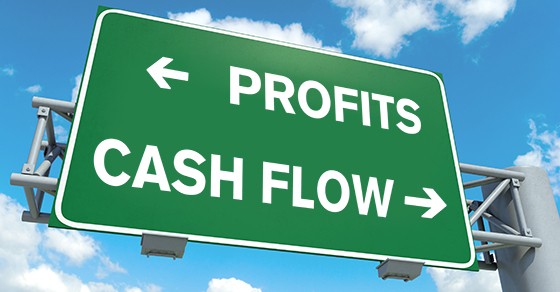
Most of us are taught from a young age never to assume anything. Why? Well, because when you assume, you make an … you probably know how the rest of the expression goes.
A dangerous assumption that many business owners make is that, if their companies are profitable, their cash flow must also be strong. But this isn’t always the case. Taking a closer look at the accounting involved can provide an explanation.
Investing in the business
What are profits, really? In accounting terms, they’re closely related to taxable income. Reported at the bottom of your company’s income statement, profits are essentially the result of revenue less the cost of goods sold and other operating expenses incurred in the accounting period.
Generally Accepted Accounting Principles (GAAP) require companies to “match” costs and expenses to the period in which revenue is recognized. Under accrual-basis accounting, it doesn’t necessarily matter when you receive payments from customers or when you pay expenses.
For example, inventory sitting in a warehouse or retail store can’t be deducted — even though it may have been long paid for (or financed). The expense hits your income statement only when an item is sold or used. Your inventory account contains many cash outflows that are waiting to be expensed.
Other working capital accounts — such as accounts receivable, accrued expenses and trade payables — also represent a difference between the timing of cash flows. As your business grows and strives to increase future sales, you invest more in working capital, which temporarily depletes cash.
However, the reverse also may be true. That is, a mature business may be a “cash cow” that generates ample dollars, despite reporting lackluster profits.
Accounting for expenses
The difference between profits and cash flow doesn’t begin and end with working capital. Your income statement also includes depreciation and amortization, which are noncash expenses. And it excludes changes in fixed assets, bank financing and owners’ capital accounts, which affect cash on hand.
Suppose your company uses tax depreciation schedules for book purposes. Let say, in 2020, you bought new equipment to take advantage of the expanded Section 179 and bonus depreciation allowances. Then you deducted the purchase price of these items from profits in 2020. However, because these purchases were financed with debt, the actual cash outflows from the investments in 2020 were minimal.
In 2021, your business will make loan payments that will reduce the amount of cash in your checking account. But your profits will be hit with only the interest expense (not the amount of principal that’s being repaid). Plus, there will be no “basis” left in the 2020 purchases to depreciate in 2021. These circumstances will artificially boost profits in 2021, without a proportionate increase in cash.
Keeping your eye on the ball
It’s dangerous to assume that, just because you’re turning a profit, your cash position is strong. Cash flow warrants careful monitoring. Our firm can help you generate accurate financial statements and glean the most important insights from them.
© 2021
